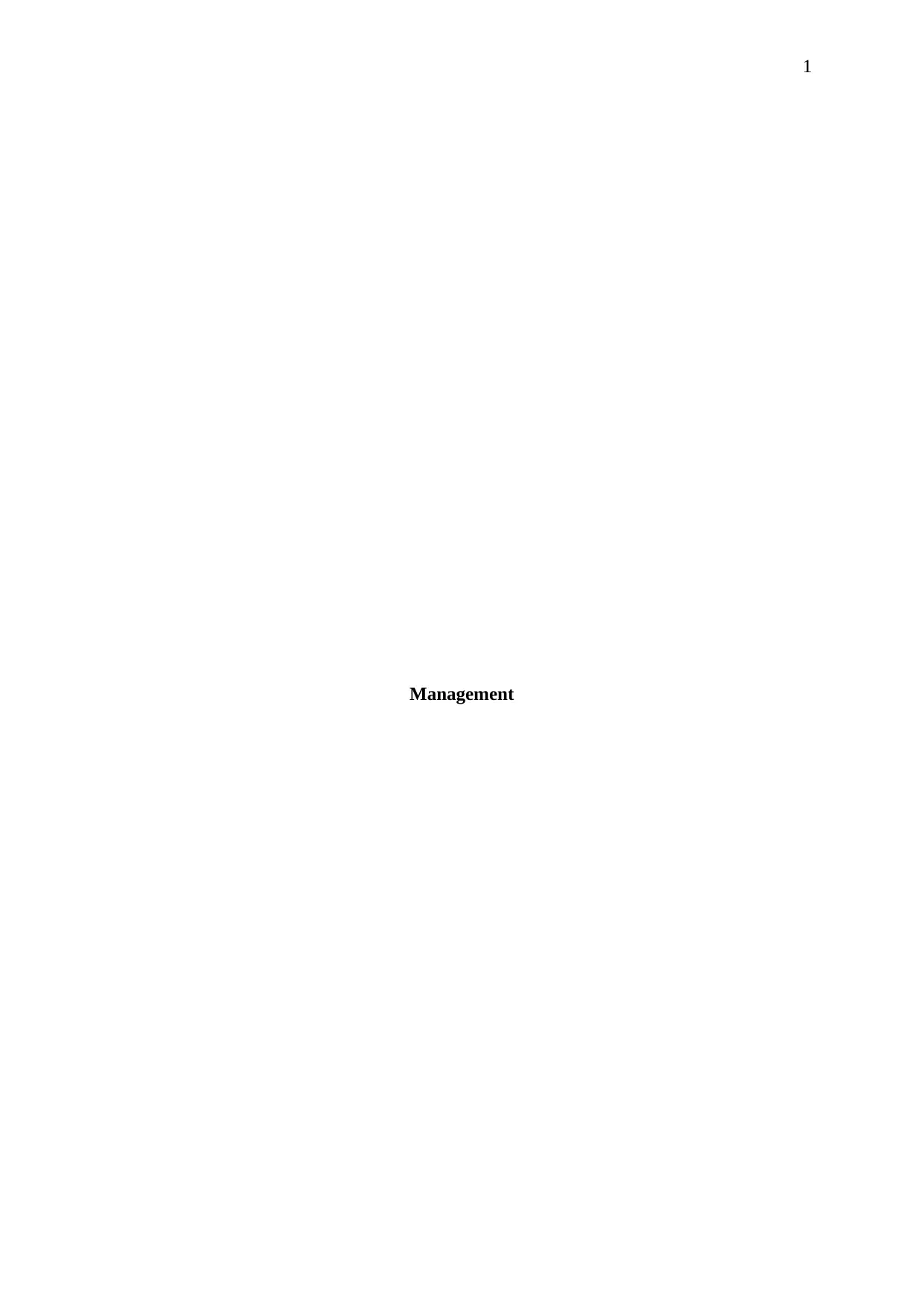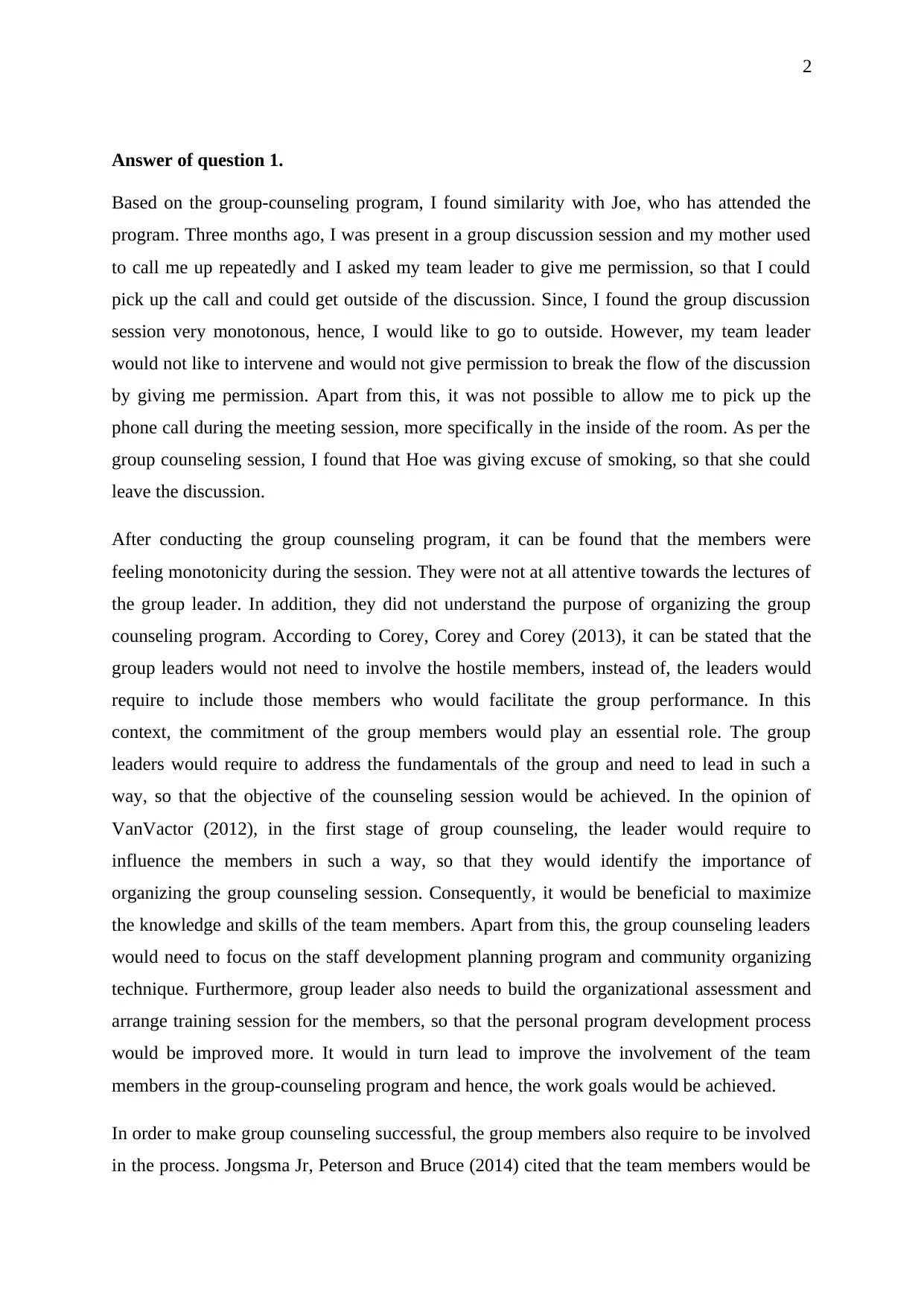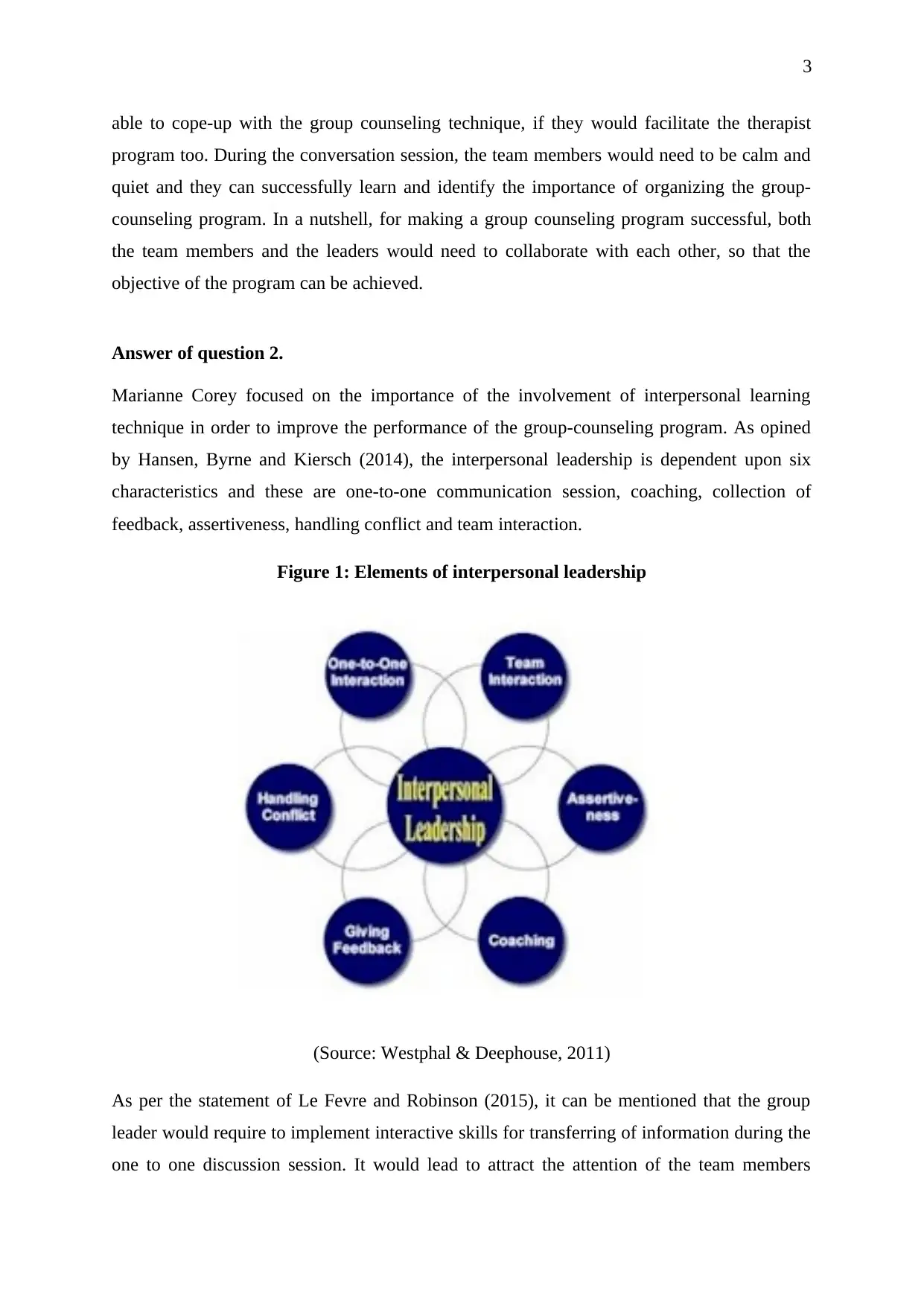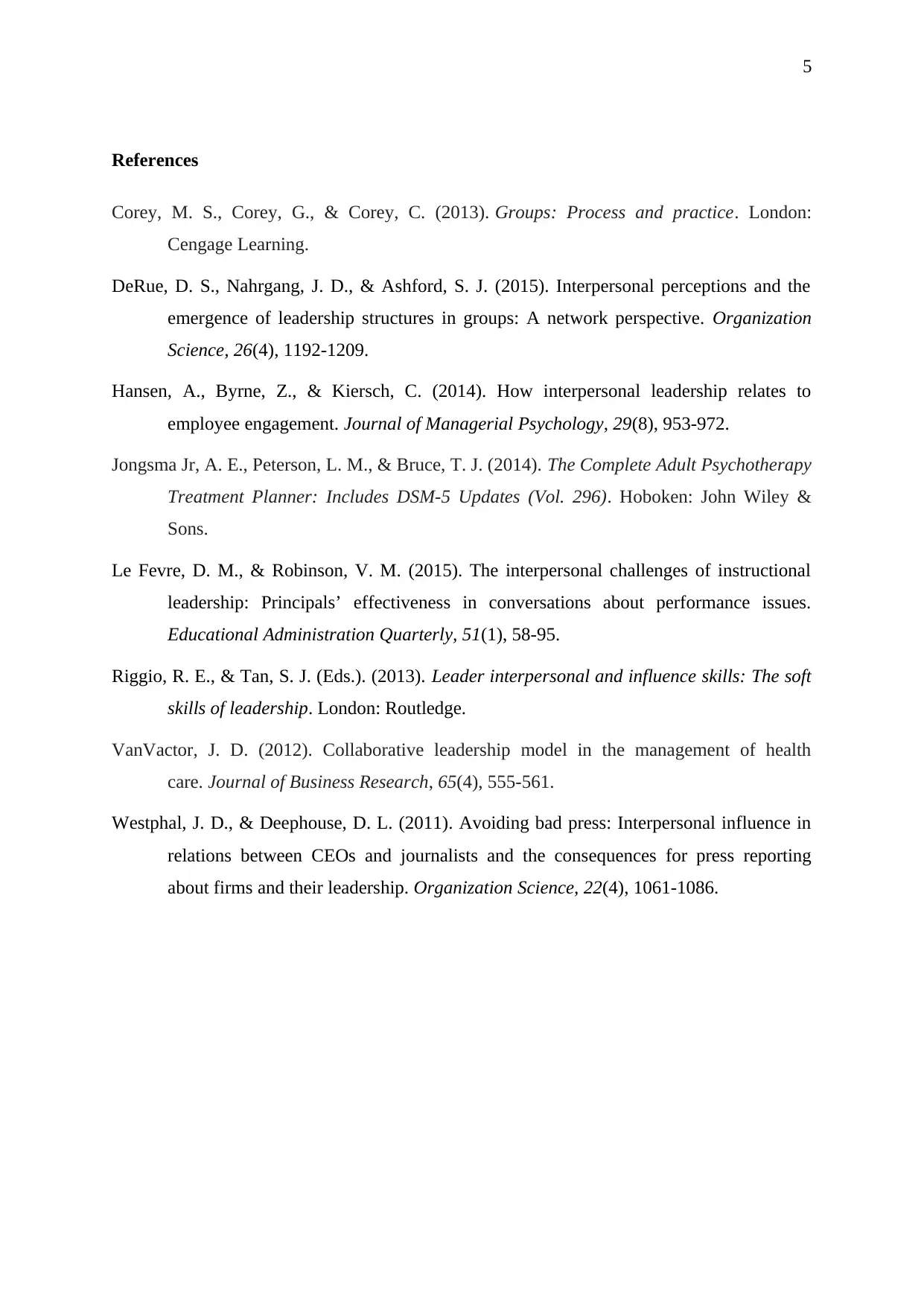HSCO 511: Reflection on Group Counseling, Leadership & Dynamics
VerifiedAdded on 2023/04/26
|5
|1441
|106
Essay
AI Summary
This essay is a reflection on group counseling dynamics, drawing from the 'Groups in Action' DVD and related literature. It identifies with a group member named Joe, based on a personal experience of feeling disengaged during a group discussion. The essay emphasizes the importance of group leader commitment, member involvement, and interpersonal learning techniques, referencing Marianne Corey's leadership theory. It highlights elements such as one-to-one communication, coaching, feedback, assertiveness, conflict handling, and team interaction as crucial for effective group performance. The paper also discusses the significance of addressing psychological problems within the group and fostering cohesion to enhance overall team performance. Ultimately, it advocates for collaboration between leaders and members to achieve the goals of group counseling programs. Desklib provides a platform to access this and other solved assignments.

1
Management
Management
Paraphrase This Document
Need a fresh take? Get an instant paraphrase of this document with our AI Paraphraser

2
Answer of question 1.
Based on the group-counseling program, I found similarity with Joe, who has attended the
program. Three months ago, I was present in a group discussion session and my mother used
to call me up repeatedly and I asked my team leader to give me permission, so that I could
pick up the call and could get outside of the discussion. Since, I found the group discussion
session very monotonous, hence, I would like to go to outside. However, my team leader
would not like to intervene and would not give permission to break the flow of the discussion
by giving me permission. Apart from this, it was not possible to allow me to pick up the
phone call during the meeting session, more specifically in the inside of the room. As per the
group counseling session, I found that Hoe was giving excuse of smoking, so that she could
leave the discussion.
After conducting the group counseling program, it can be found that the members were
feeling monotonicity during the session. They were not at all attentive towards the lectures of
the group leader. In addition, they did not understand the purpose of organizing the group
counseling program. According to Corey, Corey and Corey (2013), it can be stated that the
group leaders would not need to involve the hostile members, instead of, the leaders would
require to include those members who would facilitate the group performance. In this
context, the commitment of the group members would play an essential role. The group
leaders would require to address the fundamentals of the group and need to lead in such a
way, so that the objective of the counseling session would be achieved. In the opinion of
VanVactor (2012), in the first stage of group counseling, the leader would require to
influence the members in such a way, so that they would identify the importance of
organizing the group counseling session. Consequently, it would be beneficial to maximize
the knowledge and skills of the team members. Apart from this, the group counseling leaders
would need to focus on the staff development planning program and community organizing
technique. Furthermore, group leader also needs to build the organizational assessment and
arrange training session for the members, so that the personal program development process
would be improved more. It would in turn lead to improve the involvement of the team
members in the group-counseling program and hence, the work goals would be achieved.
In order to make group counseling successful, the group members also require to be involved
in the process. Jongsma Jr, Peterson and Bruce (2014) cited that the team members would be
Answer of question 1.
Based on the group-counseling program, I found similarity with Joe, who has attended the
program. Three months ago, I was present in a group discussion session and my mother used
to call me up repeatedly and I asked my team leader to give me permission, so that I could
pick up the call and could get outside of the discussion. Since, I found the group discussion
session very monotonous, hence, I would like to go to outside. However, my team leader
would not like to intervene and would not give permission to break the flow of the discussion
by giving me permission. Apart from this, it was not possible to allow me to pick up the
phone call during the meeting session, more specifically in the inside of the room. As per the
group counseling session, I found that Hoe was giving excuse of smoking, so that she could
leave the discussion.
After conducting the group counseling program, it can be found that the members were
feeling monotonicity during the session. They were not at all attentive towards the lectures of
the group leader. In addition, they did not understand the purpose of organizing the group
counseling program. According to Corey, Corey and Corey (2013), it can be stated that the
group leaders would not need to involve the hostile members, instead of, the leaders would
require to include those members who would facilitate the group performance. In this
context, the commitment of the group members would play an essential role. The group
leaders would require to address the fundamentals of the group and need to lead in such a
way, so that the objective of the counseling session would be achieved. In the opinion of
VanVactor (2012), in the first stage of group counseling, the leader would require to
influence the members in such a way, so that they would identify the importance of
organizing the group counseling session. Consequently, it would be beneficial to maximize
the knowledge and skills of the team members. Apart from this, the group counseling leaders
would need to focus on the staff development planning program and community organizing
technique. Furthermore, group leader also needs to build the organizational assessment and
arrange training session for the members, so that the personal program development process
would be improved more. It would in turn lead to improve the involvement of the team
members in the group-counseling program and hence, the work goals would be achieved.
In order to make group counseling successful, the group members also require to be involved
in the process. Jongsma Jr, Peterson and Bruce (2014) cited that the team members would be

3
able to cope-up with the group counseling technique, if they would facilitate the therapist
program too. During the conversation session, the team members would need to be calm and
quiet and they can successfully learn and identify the importance of organizing the group-
counseling program. In a nutshell, for making a group counseling program successful, both
the team members and the leaders would need to collaborate with each other, so that the
objective of the program can be achieved.
Answer of question 2.
Marianne Corey focused on the importance of the involvement of interpersonal learning
technique in order to improve the performance of the group-counseling program. As opined
by Hansen, Byrne and Kiersch (2014), the interpersonal leadership is dependent upon six
characteristics and these are one-to-one communication session, coaching, collection of
feedback, assertiveness, handling conflict and team interaction.
Figure 1: Elements of interpersonal leadership
(Source: Westphal & Deephouse, 2011)
As per the statement of Le Fevre and Robinson (2015), it can be mentioned that the group
leader would require to implement interactive skills for transferring of information during the
one to one discussion session. It would lead to attract the attention of the team members
able to cope-up with the group counseling technique, if they would facilitate the therapist
program too. During the conversation session, the team members would need to be calm and
quiet and they can successfully learn and identify the importance of organizing the group-
counseling program. In a nutshell, for making a group counseling program successful, both
the team members and the leaders would need to collaborate with each other, so that the
objective of the program can be achieved.
Answer of question 2.
Marianne Corey focused on the importance of the involvement of interpersonal learning
technique in order to improve the performance of the group-counseling program. As opined
by Hansen, Byrne and Kiersch (2014), the interpersonal leadership is dependent upon six
characteristics and these are one-to-one communication session, coaching, collection of
feedback, assertiveness, handling conflict and team interaction.
Figure 1: Elements of interpersonal leadership
(Source: Westphal & Deephouse, 2011)
As per the statement of Le Fevre and Robinson (2015), it can be mentioned that the group
leader would require to implement interactive skills for transferring of information during the
one to one discussion session. It would lead to attract the attention of the team members
⊘ This is a preview!⊘
Do you want full access?
Subscribe today to unlock all pages.

Trusted by 1+ million students worldwide

4
towards his. In addition, the group leader needs to assist the team members, so that they
would get motivation in achieving the objectives of organizing the group counseling session.
After that, the team leader would require to collect feedback regarding the performance
standard as per the leadership theory of Marianne Corey (DeRue, Nahrgang & Ashford,
2015). As per the characteristics of assertiveness, the group leader would need to focus to
solve the problems of the team members. In this context, the leaders would need to ask the
questions like “Is there someone here, who can relate the situation with you?” I think, it
would be beneficial to increase the involvement of the team members more and it would
reflect the personality of them. Based on it, the group-counseling leader would take
initiatives, so that the goal of organizing the group session would be met.
Riggio and Tan (2013) cited that the interpersonal leadership is significant to increase the
collaboration among the team members and hence, it can be inferred that the conflicts among
them would be avoided. In addition, understanding and trust on the others among the team
members would be increased. It would in turn improve the listening power of the team
members and it would be reflected in the performance level. As per the opinion of Riggio and
Tan (2013), it can be stated that effective group performance would be affected due to the
lack of cohesion. It would allow each of the members to come to the others and the team
performance would be improved significantly. In this context, it is necessary to consider the
psychotherapeutic elements of leadership for influencing the team members towards the
goals. Consequently, the group leader would be able to identify the psychological problems
of the team members and can resolve it, otherwise it would affect the individual performance.
It is the other approach of enhancing commitment. In order to lead the team members
towards the goal, the group leader would require to speak in lower tone but it is required to be
influencing, so that each of the members would find out the importance of achieving the
objectives and improve the performance level.
towards his. In addition, the group leader needs to assist the team members, so that they
would get motivation in achieving the objectives of organizing the group counseling session.
After that, the team leader would require to collect feedback regarding the performance
standard as per the leadership theory of Marianne Corey (DeRue, Nahrgang & Ashford,
2015). As per the characteristics of assertiveness, the group leader would need to focus to
solve the problems of the team members. In this context, the leaders would need to ask the
questions like “Is there someone here, who can relate the situation with you?” I think, it
would be beneficial to increase the involvement of the team members more and it would
reflect the personality of them. Based on it, the group-counseling leader would take
initiatives, so that the goal of organizing the group session would be met.
Riggio and Tan (2013) cited that the interpersonal leadership is significant to increase the
collaboration among the team members and hence, it can be inferred that the conflicts among
them would be avoided. In addition, understanding and trust on the others among the team
members would be increased. It would in turn improve the listening power of the team
members and it would be reflected in the performance level. As per the opinion of Riggio and
Tan (2013), it can be stated that effective group performance would be affected due to the
lack of cohesion. It would allow each of the members to come to the others and the team
performance would be improved significantly. In this context, it is necessary to consider the
psychotherapeutic elements of leadership for influencing the team members towards the
goals. Consequently, the group leader would be able to identify the psychological problems
of the team members and can resolve it, otherwise it would affect the individual performance.
It is the other approach of enhancing commitment. In order to lead the team members
towards the goal, the group leader would require to speak in lower tone but it is required to be
influencing, so that each of the members would find out the importance of achieving the
objectives and improve the performance level.
Paraphrase This Document
Need a fresh take? Get an instant paraphrase of this document with our AI Paraphraser

5
References
Corey, M. S., Corey, G., & Corey, C. (2013). Groups: Process and practice. London:
Cengage Learning.
DeRue, D. S., Nahrgang, J. D., & Ashford, S. J. (2015). Interpersonal perceptions and the
emergence of leadership structures in groups: A network perspective. Organization
Science, 26(4), 1192-1209.
Hansen, A., Byrne, Z., & Kiersch, C. (2014). How interpersonal leadership relates to
employee engagement. Journal of Managerial Psychology, 29(8), 953-972.
Jongsma Jr, A. E., Peterson, L. M., & Bruce, T. J. (2014). The Complete Adult Psychotherapy
Treatment Planner: Includes DSM-5 Updates (Vol. 296). Hoboken: John Wiley &
Sons.
Le Fevre, D. M., & Robinson, V. M. (2015). The interpersonal challenges of instructional
leadership: Principals’ effectiveness in conversations about performance issues.
Educational Administration Quarterly, 51(1), 58-95.
Riggio, R. E., & Tan, S. J. (Eds.). (2013). Leader interpersonal and influence skills: The soft
skills of leadership. London: Routledge.
VanVactor, J. D. (2012). Collaborative leadership model in the management of health
care. Journal of Business Research, 65(4), 555-561.
Westphal, J. D., & Deephouse, D. L. (2011). Avoiding bad press: Interpersonal influence in
relations between CEOs and journalists and the consequences for press reporting
about firms and their leadership. Organization Science, 22(4), 1061-1086.
References
Corey, M. S., Corey, G., & Corey, C. (2013). Groups: Process and practice. London:
Cengage Learning.
DeRue, D. S., Nahrgang, J. D., & Ashford, S. J. (2015). Interpersonal perceptions and the
emergence of leadership structures in groups: A network perspective. Organization
Science, 26(4), 1192-1209.
Hansen, A., Byrne, Z., & Kiersch, C. (2014). How interpersonal leadership relates to
employee engagement. Journal of Managerial Psychology, 29(8), 953-972.
Jongsma Jr, A. E., Peterson, L. M., & Bruce, T. J. (2014). The Complete Adult Psychotherapy
Treatment Planner: Includes DSM-5 Updates (Vol. 296). Hoboken: John Wiley &
Sons.
Le Fevre, D. M., & Robinson, V. M. (2015). The interpersonal challenges of instructional
leadership: Principals’ effectiveness in conversations about performance issues.
Educational Administration Quarterly, 51(1), 58-95.
Riggio, R. E., & Tan, S. J. (Eds.). (2013). Leader interpersonal and influence skills: The soft
skills of leadership. London: Routledge.
VanVactor, J. D. (2012). Collaborative leadership model in the management of health
care. Journal of Business Research, 65(4), 555-561.
Westphal, J. D., & Deephouse, D. L. (2011). Avoiding bad press: Interpersonal influence in
relations between CEOs and journalists and the consequences for press reporting
about firms and their leadership. Organization Science, 22(4), 1061-1086.
1 out of 5
Related Documents
Your All-in-One AI-Powered Toolkit for Academic Success.
+13062052269
info@desklib.com
Available 24*7 on WhatsApp / Email
![[object Object]](/_next/static/media/star-bottom.7253800d.svg)
Unlock your academic potential
Copyright © 2020–2025 A2Z Services. All Rights Reserved. Developed and managed by ZUCOL.





